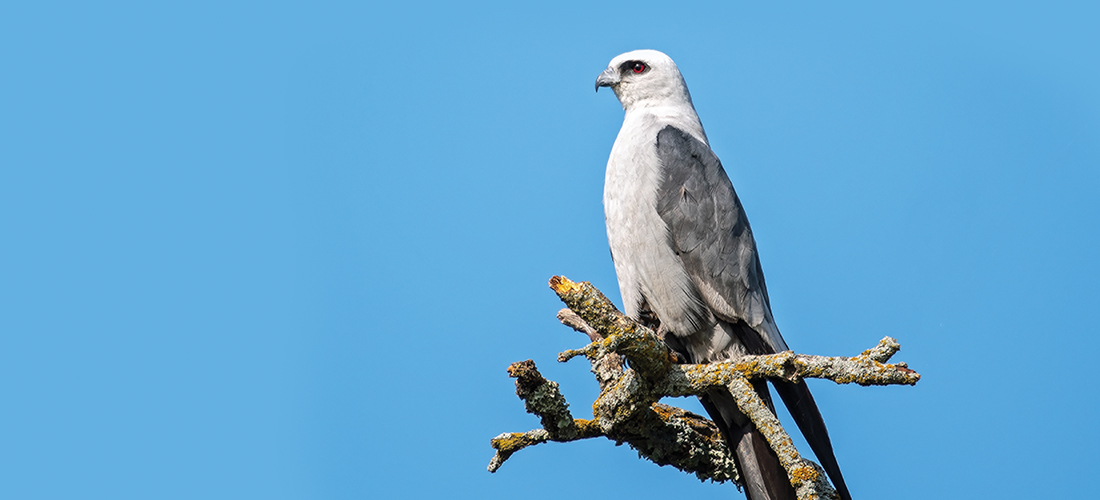
Stranger in Town
Mississippi kite finds new regions
By Susan Campbell
Seldom do we hear of good news when it comes to the status of our migrant bird populations. But there are species that are actually expanding their ranges as a result of human alteration of habitats. The Mississippi kite here in the Southeast is one. This is a handsome raptor of wooded terrain that feeds mainly on large insects. It was found breeding in the floodplain of the Roanoke River in the late 1980s. The next region where it was detected happened to be here in the Sandhills. And now it can be found in the Triad as well as other locations in the Piedmont and the Coastal Plain.
These are small, sleek raptors that are very maneuverable. Adults are a mix of gray and black with long, tapered wings, a relatively long, squared-off tail and a delicate, hooked bill. Immature birds are streaked brown with barred tails. They are birds built to catch rapidly moving, aerial prey. Grasshoppers, beetles, dragonflies and even bats are targets when hunting. They also feed low to the ground when small reptiles and mammals are abundant. In late summer, as they are preparing to head south, large flocks can be seen foraging over large open areas such as farm fields where flying insects are abundant.
Although they breed here, Mississippi kites winter in South America. As well-studied as the species has been in the United States, little is known about them after they leave. Although they collect in large groups in the south-central U.S. and travel to southern Brazil and northern Argentina, their ecology is a question mark. But we have good data on the Midwestern and Southeastern populations, both of which are expanding. Everything from increases in pasture lands, golf courses and parks adjacent to mature woodlands are providing opportunities for nesting.
An increase in nesting around human habitation means an increase in kite interactions with people. And this can actually be problematic. Mississippi kites are very aggressive when it comes to defending their nests and young. I have been on the receiving end of warning whistles given by territorial individuals a number of times. Furthermore, they will readily dive bomb perceived threats — and this includes humans. I was very startled one summer several years ago to not only observe a new family on the farm where I was living in Southern Pines, but to also be buzzed by one of the adults. I was shocked by how quickly I was attacked and how close the bird came to my head. A very effective defensive maneuver for sure!
Late in the summer, kites will amass at rich foraging sites before they migrate southward. These sites may be north or west of the breeding grounds. Dozens can be seen alternately soaring and wheeling around above farm fields where an abundance of large insects such as grasshoppers, locusts, and beetles are found. If you happen upon one of these locations, it is quite a sight to see. For whatever reason, few areas consistently attract kites from year to year. One spot that is reliable in the N.C. foothills (oddly enough, since they do not breed there) is Irma’s Produce fields in McDowell County —right along I-40. If you are passing in late July or early August, it is well worth a stop. Not only do the birds put on quite a show, but I hear that Irma’s fruits and veggies are a treat as well.
There is much interest in documenting nesting Mississippi kites here in North Carolina. Should you know of a nest site or see adults or immature kites in the next few months, please drop me an email. These are beautiful and fascinating birds and certainly worthy of special attention. OH
Susan Campbell would love to hear about your wildlife sightings and receive your photos. She can be contacted by email at susan@ncaves.com or by phone at (910-585-0574).





